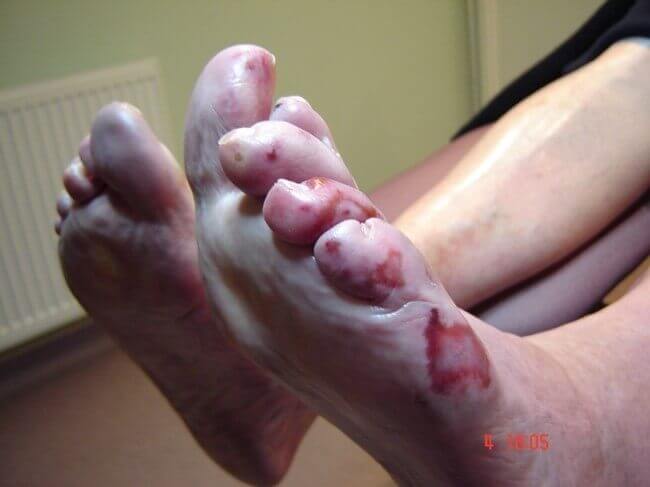How Does Raynaud's Syndrome Affect the Feet?
The Podiatry Team

We need you to help increase awareness and understanding of Raynaud's which is a common condition affecting 10 million people in the UK yet so many remain undiagnosed or just deal with the impact.
In response to cold temperature changes, the small blood vessels in our extremities such as our fingers and toes temporarily contract (known as vasospasms) which can lead to a change of colour in the skin and temperature. The skin may look paler for example and become colder to touch. This is because the blood supply to the extremities has been restricted.
This change in our circulatory system is our body’s natural response to heat loss.
Once our hands and feet return to a warmer climate, the small blood vessels relax allowing the blood flow to return to normal and the skin becomes pink and warm again.
What is Raynaud's syndrome?
In people who have Raynauds, the small blood vessels in the extremities are over-sensitive to temperature changes, so the response occurs much more readily. It is also exaggerated and prolonged. As a result, the changes are more severe; the affected skin may change colour from bright white to purplely / blue and can feel freezing cold or numb.

As the blood flow returns to the affected areas, the skin may turn bright red and throb, tingle or burn. This exaggerated response is known as a ’Raynaud’s attack’. The attack can last from several minutes up to several hours and can be very uncomfortable or even painful for some, making everyday activities difficult.
These attacks are most common in the fingers and toes, but all extremities can be affected such as the nose, ears and lips.
Problems with Raynaud's
For most people, these symptoms are usually minor and eventually everything returns to normal relatively quickly without any complications. However, repeated episodes of an attack can lead to dry, devitalised skin and changes in nail shape and texture. In more extreme cases, injury to the soft tissue can occur resulting in chilblains, skin sores / ulcers or even possible gangrene.
Taking care of your feet
- Dress accordingly – wear good insulating fibres such as wool or bamboo.
- Moisturise your feet on a daily basis, avoiding between the toes.
- Wear supportive shoes that do not rub and allows you to wear thicker socks or tights.
- Keep active as this improves circulation and have plenty of hot drinks and food throughout the day.
- In severe or recurrent cold weather problems in the feet, consult your GP who may advise a prescription drug to relax the constricted vessels and thus improve blood flow to the extremities.
How our podiatry clinic can help
Remember to inspect your feet daily and take note of any changes in your skin. If you are concerned seek medical advice from our podiatry team here.
If you have bony feet or foot deformities, insoles can help to cushion the bony areas and provide better protection. Thermal insoles can also help to keep the feet warm.
If your nails are thickened and have changed shape making them difficult to manage, contact our Podiatry team to get them cut and filed.

